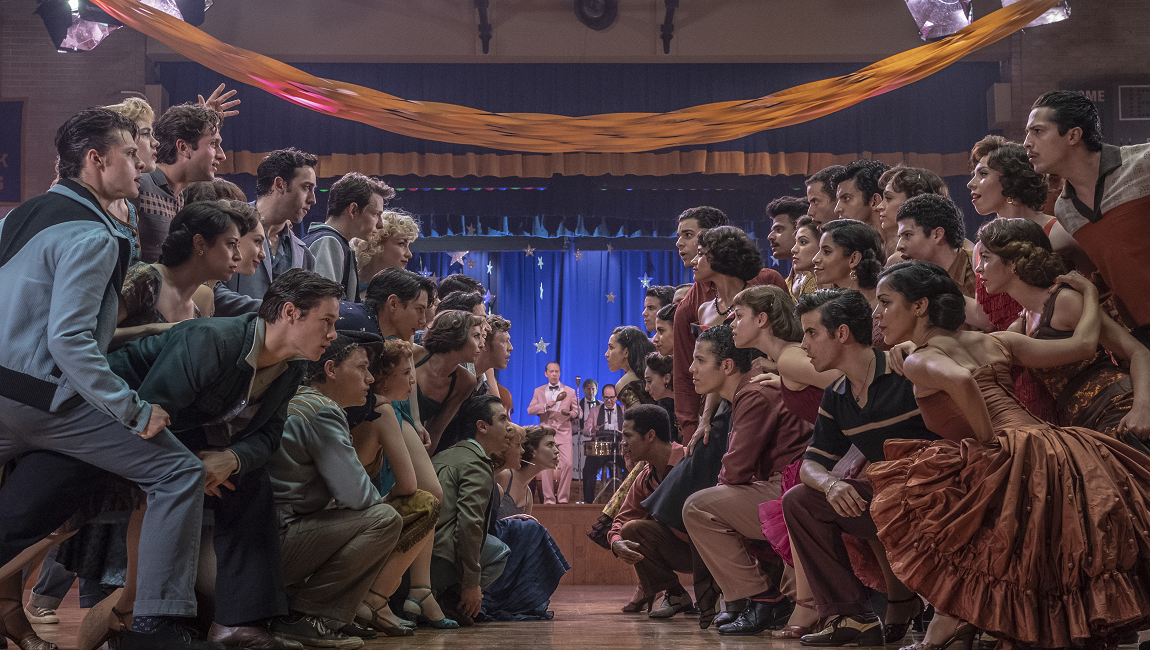#7. Perhaps one of the greatest movie miracles Steven Spielberg has ever pulled off is in overcoming the Ansel of it all in his remake of West Side Story. Anyone who has borne witness to the actor’s musical pursuits understands what a charisma black hole he is, and the legions who saw his Gumby-like athletic prowess in the Divergent series have ample cause to doubt his facility with such a choreography-laden production as a West Side Story remake. And yet, here we are, year’s end, Elgort’s contributions proving relatively flat and vacant next to his co-stars, but not damningly so, and West Side Story has settled in as one of 2021’s best films.
Of course, mitigating the lead actor’s wack factor isn’t the why of the film’s success, only the first cleared hurdle, and indeed Tony Kushner proves Spielberg’s most essential ally in justifying the existence of this remake. The playwright/screenwriter’s apparent operating procedure in approaching the material is to presume subtext where text already existed — it’s not as if there was much nuance to the original — and so has helped construct this West Side Story as a kind of supertext. It’s hardly subtle — appropriate, perhaps, for a musical conceived as Capulets and Montagues, but with racism — but it works here to speak to a more specific, resonant cultural psychology (never more apt than it feels in 2021; it’s no accident Spielberg chose to make this film now). In this West Side Story, street wars are waged over disappearing turf, bulldozed by gentrification and capital, stamped with a weeks-away expiration date; and yet tribalism, for these young men, is both self and security, more important than the promise of a tomorrow that offers only further disintegration of the myth in their minds. Elsewhere, as Maria, Rachel Zegler wonderfully mingles youthful naivete with stubborn determination, playing her as a young woman contending with a toxic cocktail of external influences, and clarifying her character beyond the simplicity of her Shakespearean origination. Even in the film’s archest flourishes, there exists this commitment to an expanded, if heightened, realism: in making would-be gang-rapists of the Jets when Anita comes to deliver Maria’s message to Tony, Kushner gifts Anita’s actions with some semblance of psychological legibility, rather than leaving them as the mere inevitability of tragedy. (In other words, as InRO staff writer Patrick Preziosi previously put it, “it truly feels as if life exists beyond the music.”)
Of course, none of this works without Spielberg, and he here seems as supercharged as he has in ages. West Side Story features some of the best images of his recent career — though this is admittedly easy to accomplish when working with DP Janusz Kamiński — from a scene of Tony standing in a puddle, its reflected lights shimmering like a halo around him, to the film’s love-at-first-sight moment, the pair frozen on a gym floor, parted by a blur of bodies in dance, lens flares flitting across the image like intimations of magic. These moments are met by less sexy but no less masterful tracking and crane shots, Spielberg often shooting the film’s streets as if they were the bombed-out ruins of a war-ravaged city (this when they aren’t alive with bold colors swirling in impromptu dance), as well as more brutal viscerality — the film’s first rumble promises this isn’t Wise’s West Side Story. It’s this dichotomy, then, that speaks to 2021’s West Side Story’s greatest strength and raison d’etre: Spielberg deromanticizes his version not to eliminate romance — in its most expansive sense — but to draw attention to it, to enunciate its artifice, place it within reality, and show its necessity in navigating a tragic, toxic world. In allowing it to here shine through the cracks of a rotting foundation, West Side Story has never seemed more romantic.







